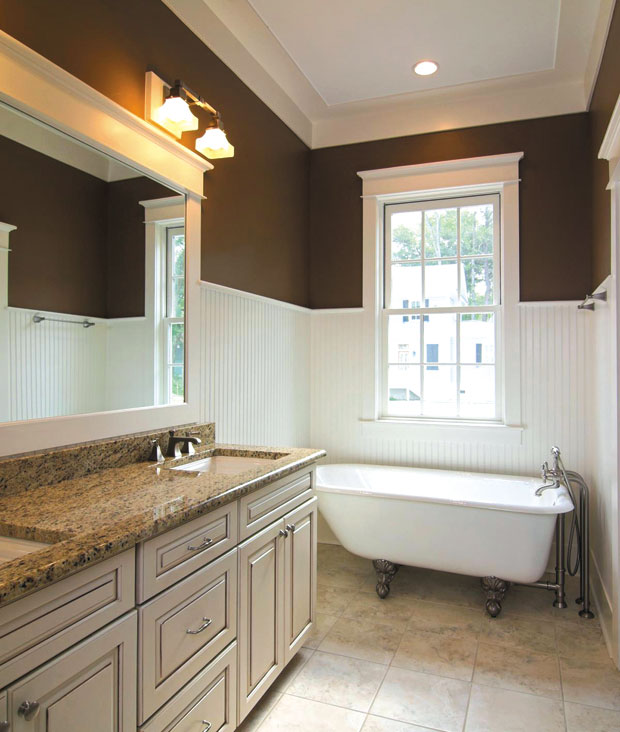Painting with attention to detail
The difference between a professional paint job and a do-it-yourself job that looks like a pro painted it is surprisingly simple. As the old adage goes, the devil’s in the details. If you want that professional look while maintaining your DIY pride — and checkbook — take the time to pay attention to often overlooked details.
Step-by-step prep
Prepping is vital so make sure to cover, tape and protect. That way you’ll be able to place furniture and accents where you want them, and not where you need them to cover the paint spill in the corner. This will give the space a polished look you’ll enjoy.
Move furniture and other items out of the room if at all possible. If not, be sure to completely cover and secure the items to fend off spills and spatters. Opt for a canvas drop cloth instead of a one-time plastic covering. Canvas is extremely durable and will lie flat, preventing any unforeseen tripping or rips that may expose flooring and furniture. Chances are this will not be the last painting project you do so it’s well worth the investment.
Use painter’s tape to protect woodwork like door frames, window frames and moldings, and remove electric fixture covers and plates. Don’t forget the door knobs or cabinet pulls. Use small plastic bags to cover them and secure with painter’s tape if you can’t remove them entirely.
After you’ve read the newspaper, save a few sections to use during the painting process. Should you run into any issues of stray paint, use the absorbent newspaper to soak up unwanted drops. Finally, gather rollers, brushes, paint and trays, and place them on their own drop cloth in an easily accessible area.

Focus on the details
A wide open wall is a blank canvas to DIY painters. But before you let the color flow, follow the painting process practiced by professionals. To start, look for areas that, if omitted, will surely draw negative attention and make your room look unfinished. These are items such as baseboards, trim, chair rails, molding and doors, as well as the interior of door and window frames.
These finishing touches tend to be on a smaller scale, so you’ll want to use a compact tool that gives you more control. Try a mini paint roller such as Purdy’s Wire Mini-Roller. The 4-inch and 6 1/2-inch sizes allow you to cover those hard-to-reach or small areas with a smooth look.
Wrap up the room
It is best to paint any trim before tackling the walls. Start with the baseboards and paint around the room in one direction, paying careful attention not to miss any areas. Next, paint any window trim, door trim and crown molding. Be sure to remove painter’s tape before the paint dries for a cleaner line.
When you’re ready for the walls, start painting from the top and work your way down the wall. As you get close to where your ceiling meets the wall or where the wall meets trim, take your time, and don’t feel the need to paint right up to the edge with a large roller. This is another area where mini rollers work well.
Before putting all your furniture back and paint cans away, take one last look around. Perhaps you have fixtures or furniture that could use a touch-up. You can take this moment to carry your color scheme throughout the room and add new life to mirrors or picture frames.
You can paint like a pro. From project start to finish, take the time to prep and focus on the details. And when your friends and family ask for the name and number of the contractor you used, it’s up to you what you share.
This article is courtesy of Brandpoint.